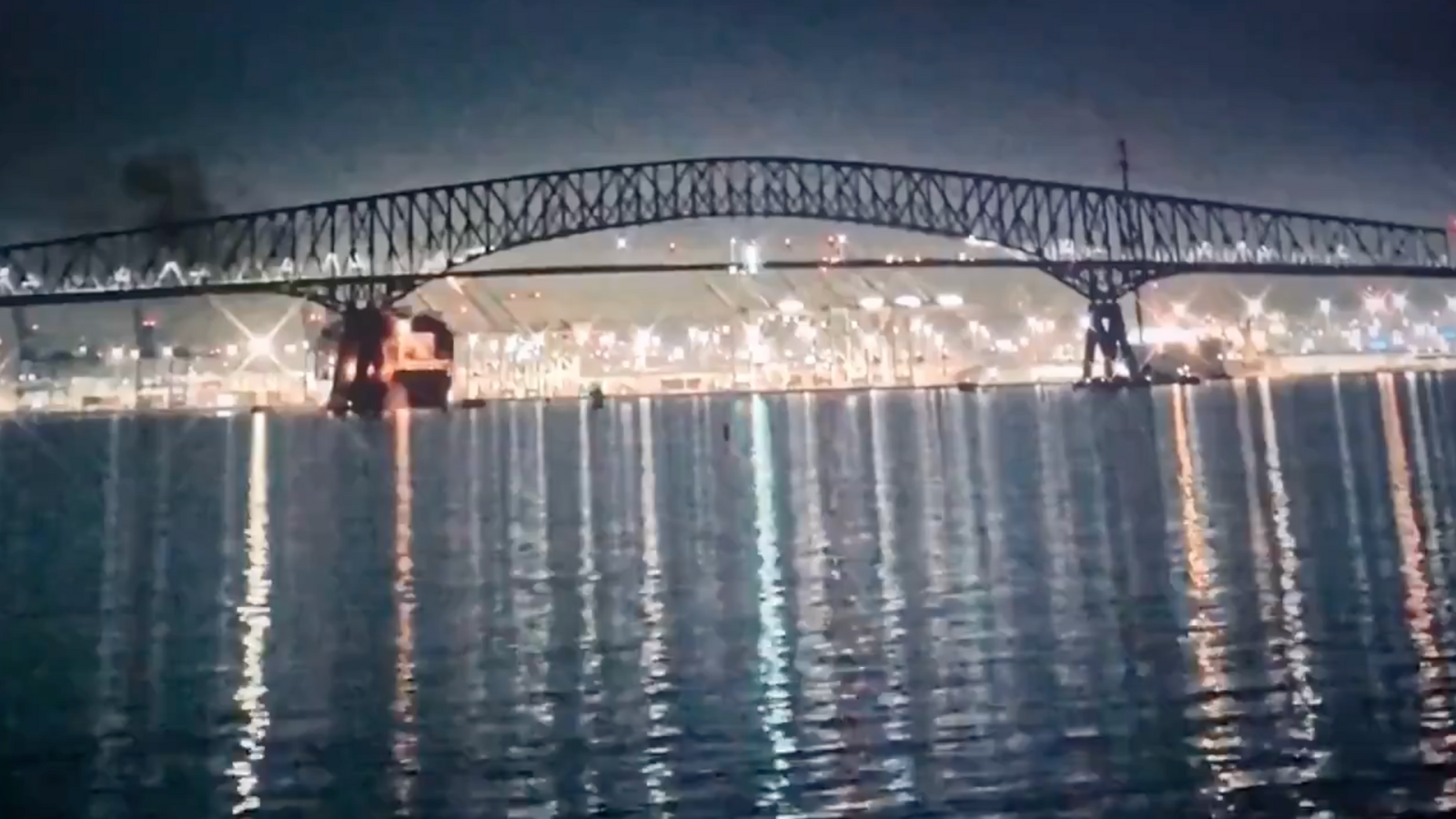All eyes in America have been on Baltimore since early Tuesday morning when a cargo ship took down the Francis Scott Key Bridge.
Unfortunately, multiple people are still missing, and the details of the crash have yet to be determined.
Watch the shocking video here:
Here's video of the collapse of the Francis Key Scott Bridge from this morning. The bridge was struck by a cargo ship just before 1:30 a.m. A search is underway for at least seven people. pic.twitter.com/FRGHeJ1gIe
— The Baltimore Banner (@BaltimoreBanner) March 26, 2024
This event was catastrophic, and even surprising to some people that a ship would be able to take down the structure.
Fox News provides John Pistorino’s (structural engineer) comments on the event:
“At this point, I’m surprised that a container ship like that, which is so large, would be able to [take it down] even if it’s off course,” he said on “Fox & Friends” Tuesday.
“Back over in Tampa, we do have some means underwater now, so if the ship does get out of its own direction, it will divert it away from the critical parts of the bridge. There’s underwater structures that the ship would come across before it actually got to the bridge itself,” he continued, referencing the Sunshine Skyway Bridge that saw a similar disaster in the Tampa Bay area decades ago.
ADVERTISEMENTContinuing on that note, Pistorino outlined the need for “redundancy” in bridge construction.
Redundancy is a key word in bridge construction. Redundancy correlates to the quality of the bridge which enables it to perform is design while in a damaged state.
The Francis Scott Key Bridge is built similarly to other bridges along the Delaware River, like the Betsy Ross Bridge in Philadelphia.
If the structure should have withstood a hit from a major ship, why did this bridge go down?
ABC 7 News goes into a possible explanation:
However, there is one major difference between the Key Bridge and any of the bridges that span the Delaware River.
“All of our bridges have protection systems in place to prevent ships from striking them,” said John Hanson, CEO of The Delaware River Port Authority.
Hanson said the key difference sits in the Delaware River near the bridge support piers – structures called dolphins.
“When you talk about the Betsy Ross Bridge, we have concrete dolphins that are protected against ships, that will prevent a ship from striking the pier,” said Hanson.
The article goes on to add comments from structural engineer professor at Drexel University, Dr. Abieyuwa Aghayere:
“Why were there no protection systems around the pier?” asked Dr. Abieyuwa Aghayere.
Aghayere analyzes structural collapses. He was surprised that this type of bridge, known as a continuous truss bridge, completely failed.
“When something is continuous, it is supposed to at least hang on,” he said. “What I saw was that once the pier that was supporting that span gave way, the bridge just went down. There was no hesitation.”
The impact of this bridge collapsing can have a devastating results worldwide:
The Baltimore bridge collapse is set to disrupt global trade, including metals, fossil fuels and grains, per Bloomberg.
— unusual_whales (@unusual_whales) March 27, 2024
🇺🇲 Destroyed bridge in Baltimore. Aerial view. Dismantling of the collapsed structures will begin in April-May.
$81 billion in damages.
"Bidenomics works"The #Ukrainian captain did wonders. 😀 pic.twitter.com/9daedDQNYE
— Иван ☦ (@lll_Tatarinov_H) March 27, 2024
"We're going to need to be Maryland tough and Baltimore strong in this moment. This isn't just going to impact Maryland; it's impacting the entire country… We have to be able to move with speed and urgency to ensure its completion."
— @iamwesmoore on Tuesday's bridge collapse pic.twitter.com/UbHBHOcU4o
— Morning Joe (@Morning_Joe) March 27, 2024
Francis Scott Key Bridge in Baltimore Collapses
What impact on the economy will this have?All ship traffic at the port of Baltimore has been halted indefinitely, which will have lasting economic effects.
🟥The port is the second-largest seaport in the mid-Atlantic region.
🟥It… pic.twitter.com/KR89gf9u83— theTrumpet.com (@theTrumpet_com) March 27, 2024
As @JeffFisch notes, the collapse of the Key Bridge means that the Baltimore Port will be unusable for many months.
It's the 13th most important US port for foreign trade
The economic impact on the city, which is already plagued by social misery and violent crime, will be huge pic.twitter.com/ZpPcb4Ombs
— Visegrád 24 (@visegrad24) March 26, 2024
While people have been trying to find answers to explain how the ship went off course, people should also start to look into why the bridge was built missing key components as well.



Join the conversation!
Please share your thoughts about this article below. We value your opinions, and would love to see you add to the discussion!